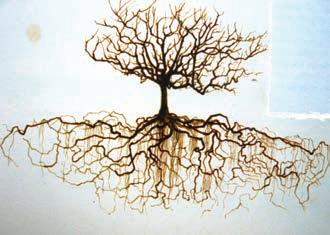RESEARCH / 11
EUCALYPTUS: A FAVOURED FILLER Demand for Eucalyptus within the cut foliage sector has increased, leading researchers at Teagasc to look at ways to improve the quality of Eucalyptus trees grown specifically for this purpose
E
ucalyptus trees are native to certain southern hemisphere countries, such as Australia, Papua New Guinea, and Indonesia, but they are widely cultivated throughout the world. There are over 500 species of Eucalyptus, many of which grow well in the mild temperate climate of Ireland.
MICROPROPAGATION GENERATES GENETICALLY IDENTICAL PLANTLETS UNDER LABORATORY CONDITIONS
40
HC / Summer 2022
HORTICULTURE TECHNICIAN DAVID WALLACE AT TEAGASC’S TRIAL PLOT IN KILDALTON
Eucalyptus trees have attractive silvery, blue-grey, and green foliage all year round, and as such Eucalyptus has become a much-desired element of cut foliage (vegetation that acts as a source of decoration) in mixed flower bouquets. While especially popular during holidays like Christmas, Valentine’s Day, and Mother’s Day, Eucalyptus’ popularity also garners a year-round demand as it’s one of the most popular decorations for events such as weddings. In Ireland, several species are cultivated commercially, specifically for use as cut foliage, and there are currently over 100 hectares of Eucalyptus in commercial cut foliage production. Four species dominate – Eucalyptus parvula, Eucalyptus cinerea, Eucalyptus glaucescens, and Eucalyptus subcrenulata – but there is always demand for new and interesting foliage with novel
characteristics. The cut foliage sector has to be able to respond to these demands, so researchers at Teagasc’s Horticulture Development Department have screened 15 Eucalyptus species to evaluate potential new species for foliage as part of the New Leaves project.
THE CHALLENGES OF REPRODUCING HIGHQUALITY TREES Eucalyptus plantations are currently established from seed-raised plants, using seed that has been collected from good quality plantations in Australasia. However, as each seed is unique, there can be considerable variation in the quality characteristics of each tree from the same seed lot. High-quality trees with exceptional characteristics can be identified in plantations from time to time, and it would be very useful to be able













